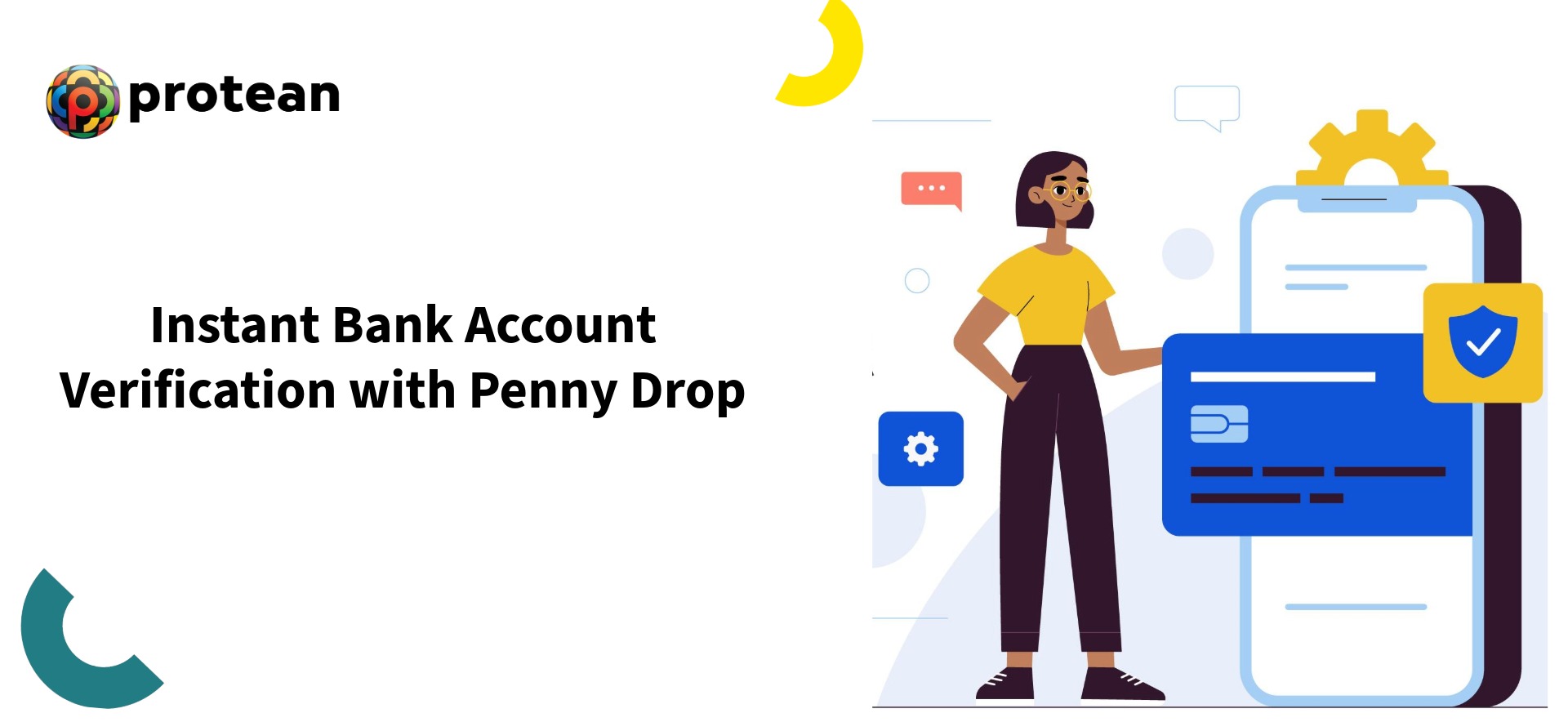Blogs
How Penny Drop Verification Ensures Payments Go to the Right Recipient
Are you worried about your payment going to the right recipient? Don’t worry, penny drop verification can help you do this accurately.
For digital transactions, the simple act of sending money can have a hidden risk. For businesses, this risk can scale up with every payroll run, vendor payment, or customer refund.
Businesses might be concerned with questions such as: “Did the funds reach the correct vendor?” Or, “was there a typo in the employee's account details?” This might seem like a minor point of friction. However, it carries a considerable amount of risk. Penny drop is a simple, elegant, and highly effective automated process and a powerful solution to these concerns. Penny drop verification is an important part of modern financial security measures that helps ensure payments are made to the correct accounts.
The Core Problem: Why Payments Go Astray
Penny drop verification is an efficient method to prevent problems like these:
Mistyped bank details
Transposing two digits in a 16-digit account number might seem like a simple error. However, it can send a payment into the digital void. In the best-case scenario, the account number does not exist, and the transaction would fail. In this case, the finance team needs to investigate, contact the recipient, get the correct details, and re-process the payment, all of which is time-consuming and full of delays and hassles.
The worse-case scenario for this error can be far more damaging. For example, the incorrect account number does exist and belongs to an unknown third party. Recovering funds sent in error is notoriously difficult, time-consuming, and next to impossible.
Sophisticated frauds
Beyond the above-mentioned manual errors, there is the ever-present threat of fraud. For example, a malicious actor might pose as a legitimate vendor. They might provide their own bank details linked to a fake invoice. Another example, a fraudster might create a synthetic identity. They might apply for a loan or service with falsified credentials but a real bank account (one they control). Without a mechanism to validate the account’s owner, a business's automated payment system would approve the transfer, sending money directly to the fraudster.
These are the two main reasons why funds end up in the wrong hands. The consequences of these risks can range from operational headaches to considerable financial losses. Therefore, penny drop verification can considerably reduce these risks by providing a pre-emptive validation step to confirm bank account details and ownership.
Unpacking the Penny Drop Mechanism
Let us decode the term "penny drop." In a penny drop verification system, a business, through an automated system, "drops" a tiny monetary amount, typically just ₹1 “penny” in India, into a beneficiary's bank account. However, the purpose here isn’t the transfer itself, but it’s the information that transfer reveals. Thus, a simple penny drop is a powerful verification tool. There are five steps through which the penny drop mechanism functions.
- Data Collection - The process is started when a user (an employee, vendor, or customer) provides their bank account details (like the beneficiary's name, the bank account number, and IFSC code).
- API Initiation - The business’s system takes these details and makes an API call to a verification service. This is where advanced platforms like RISE with Protean demonstrate their value. Their integrated Bank Account Verification API initiates the penny drop verification process in real-time.
- The ₹1 Transaction - The API instantly triggers a transaction, usually via the IMPS network, to credit ₹1 to the provided bank account.
- The Bank's Response - As the bank's system processes this tiny deposit, it sends back a response. If the account is valid and active, the transaction succeeds. This success response contains a crucial piece of data: the beneficiary's name exactly as it is registered in the bank's records.
- Automated Validation - The system then performs an instant and automatic comparison. It checks the name provided by the user against the official name returned by the bank.
A successful match in penny drop verification would confirm two things:
- The account is valid
- The person who provided the details is the verified owner.
However, a mismatch would instantly flag the account. This simple penny drop verification process exposes fraud and errors before any considerable amount of money is at risk.
Strategic Benefits: Beyond Just Name Matching
Integrating penny drop verification into your financial operations can benefit in terms of security, efficiency, and compliance.
There’s a Drastic Reduction in Payment Failures
The process can quickly identify invalid or dormant bank accounts, helping save finance teams considerable time in reconciliation and re-processing. It effectively catches data entry errors, like typos, during onboarding rather than later at payment.
It has a Robust Fraud Prevention Mechanism
Penny drop verification is a strong deterrent against payment fraud. It helps prevent fraudsters using stolen or synthetic identities by verifying account ownership. A name mismatch signals a red flag that can stop fraudulent transactions early in the process.
Enhanced Regulatory Compliance (KYC)
For industries like finance, insurance, and gaming, regulators have mandated strict KYC protocols. Verifying that a bank account belongs to the customer is a major part of this due diligence. Using a penny drop can provide a clear, auditable, and reliable record that your business has verified the beneficiary's identity and account ownership.
Streamlined Onboarding and Trust
Automating this verification step can make onboarding new vendors, employees, or customers incredibly fast and smooth. Instead of a slow, manual review, the account is usually validated in seconds. When integrated into a larger suite of verification APIs, such as the RISE with Protean platform, this penny drop check is one seamless part of a larger, secure onboarding journey.
Conclusion
Penny drop verification changes the security parameter from reactive to proactive. It can help businesses prevent loss by verifying accounts before payments, thereby reducing the need to recover lost funds. This simple, automated, and low-cost API call is a fundamental component of a modern, secure financial ecosystem. The penny drop mechanism is an essential layer of defence. For any organisation that processes payments, it can provide invaluable peace of mind by greatly reducing the risk of funds being sent to incorrect or fraudulent recipients.
Frequently Asked Questions
1. What is penny drop verification exactly?
Penny drop verification is a method to validate a bank account. Here, a small sum, like ₹1, is deposited to check if the account is active and, most importantly, to retrieve the account holder's official name from the bank for matching.
2. Is the penny drop process safe?
Yes, the penny drop verification is totally safe, but it needs to be combined with other anti-fraud measures for full security.
3. How long does a penny drop take?
When performed through a modern API, the penny drop verification is almost instant. The confirmation from the bank, including the beneficiary's name, can typically return within a few seconds.
4. Why is name matching so important in this process?
Name matching is the core security feature. It can confirm that the person providing the account details is the same person who’s the account owner. This one-to-one match can prevent fraud where someone provides a valid, active account number that does not actually belong to them.






